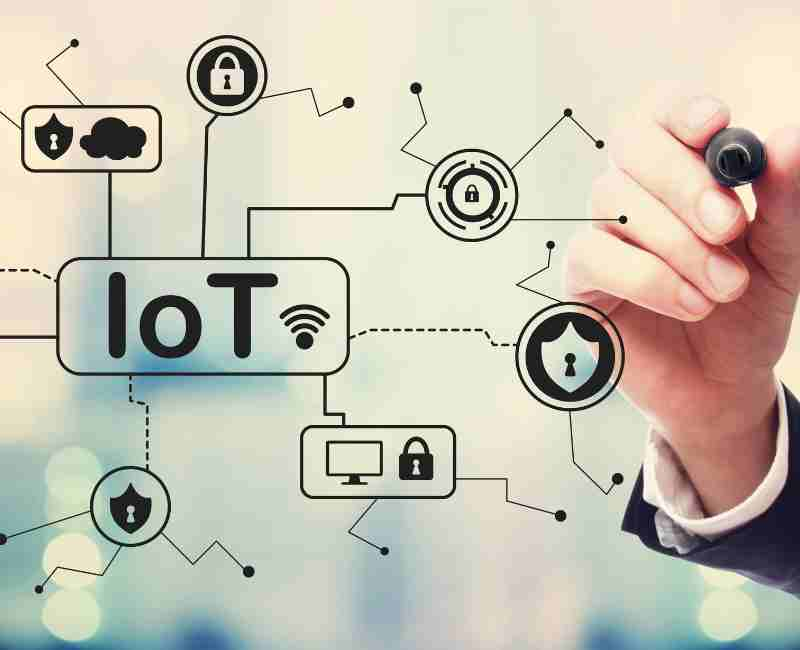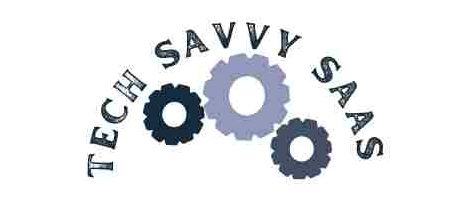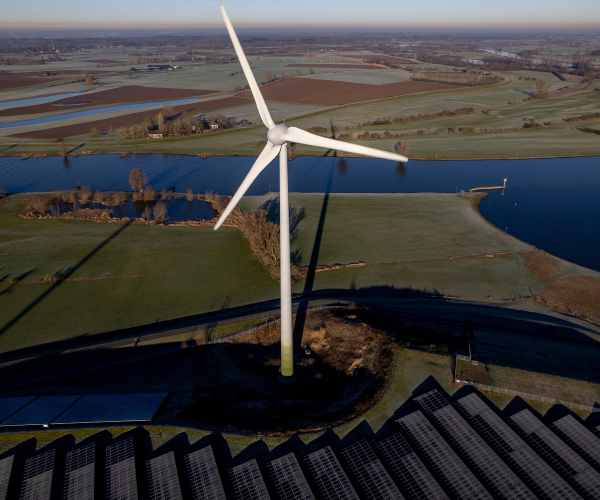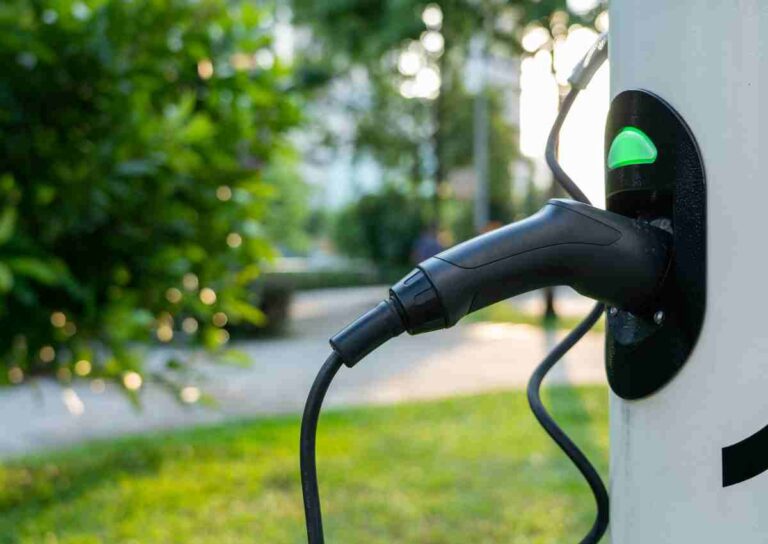The Internet of Things (IoT) has become an integral part of our interconnected world, transforming the way devices communicate and collect data. This brief overview explores the widespread integration of IoT and its pivotal role in various domains. In particular, we delve into its significance in the realm of environmental monitoring and conservation.
What is IoT?
- What is IoT?
- IoT Technologies in Environmental Monitoring
- Data Management and Analysis
- Case Studies and Applications
- Air quality monitoring
- Impacts of Air Pollution and IoT's Role
- The Role of IoT in Supporting Climate Change Initiatives
- Agriculture and environmental sustainability
- Integration of IoT in Agriculture for Sustainable Practices
- Monitoring Soil Health, Crop Conditions, and Resource Usage
- The Contribution of IoT to Promoting Environmentally Friendly Farming Methods
- Challenges and opportunities
- Technological Challenges
- Environmental Challenges
- Role of IoT in Conservation Research
- Research and development
- Support for Climate Change Initiatives
- Key Takeaways
- Additional Resources:
IoT refers to the network of interconnected devices embedded with sensors, software, and other technologies, enabling them to collect and exchange data. This interconnectedness allows for seamless communication between devices, leading to improved efficiency and enhanced capabilities.
Environmental Monitoring and Conservation
The increasing global focus on environmental issues has spurred the need for effective monitoring and conservation efforts. Environmental monitoring involves the systematic collection and analysis of data from the environment, while conservation aims to protect and preserve natural resources.
Technology’s Role in Addressing Environmental Challenges
The escalating environmental challenges, including climate change, pollution, and biodiversity loss, necessitate innovative solutions. Technology plays a crucial role in addressing these challenges by providing tools and methodologies to monitor, analyze, and mitigate environmental issues.
Significance of IoT in Conservation Efforts
One of the key technologies driving advancements in environmental monitoring is the IoT. Its ability to connect devices and collect data in real-time has revolutionized how we understand and respond to environmental changes. The collection and analysis of real-time data are particularly critical for making informed decisions in conservation efforts.

IoT Technologies in Environmental Monitoring
Devices and Sensors- In the realm of environmental monitoring, the utilization of IoT devices and sensors has revolutionized the way we collect and analyze data. These devices, equipped with advanced sensors and connectivity features, play a pivotal role in tracking and understanding various environmental parameters.
IoT Devices and Sensors
IoT devices encompass a wide range of hardware with embedded sensors and communication capabilities. These devices are strategically deployed in diverse environmental settings to gather data on factors such as temperature, humidity, air quality, and more. The sensors integrated into these devices allow for precise and continuous monitoring.
Examples of Technologies and Applications
- Weather Stations: IoT-enabled weather stations collect data on atmospheric conditions, providing real-time information on temperature, humidity, wind speed, and precipitation.
- Water Quality Sensors: Deployed in bodies of water, these sensors measure parameters like pH, dissolved oxygen, and turbidity, offering insights into the health of aquatic ecosystems.
- Air Quality Monitors: IoT devices for air quality monitoring detect pollutants such as particulate matter, carbon monoxide, and nitrogen dioxide, contributing to efforts aimed at reducing air pollution.
- Soil Moisture Sensors: Embedded in agricultural fields, these sensors measure soil moisture levels, aiding farmers in optimizing irrigation and promoting sustainable water usage.
The Role of Sensors in Data Collection
The fundamental function of sensors in environmental monitoring is to collect accurate and reliable data. Sensors continuously measure specific environmental parameters and transmit this information in real-time. This constant stream of data allows for a comprehensive understanding of the environment, enabling timely responses to changes and potential issues.
More Post: Green Web Hosting: Choosing Eco-Friendly Options for Your Website
More Post: The Green Revolution in the Automotive Industry
Data Management and Analysis
In the context of environmental monitoring and conservation, the effective management and analysis of data play a crucial role in deriving meaningful insights and informing decision-making processes. This section explores the significance of data, the role of IoT, and the application of machine learning in extracting valuable information from large datasets.
Data in Environmental Monitoring and Conservation
Informed Decision-Making
- Data serves as the foundation for understanding environmental trends, patterns, and potential risks.
- In environmental conservation, decisions based on accurate and timely data are more likely to be effective in addressing challenges.
Tracking Environmental Changes
- Data allows for the continuous monitoring of environmental parameters, enabling the identification of changes over time.
- Early detection of changes supports proactive conservation measures.
IoT’s Role in Managing and Analyzing Environmental Data
Real-time Monitoring
- IoT devices provide a continuous stream of real-time data, offering immediate insights into environmental conditions.
- Real-time monitoring enhances the ability to respond promptly to emerging environmental issues.
Big Data Handling
- The sheer volume of data generated by IoT devices requires advanced data management techniques.
- Big data technologies are employed to store, process, and analyze massive datasets efficiently.
Wireless Sensor Networks
- The interconnected nature of wireless sensor networks facilitates seamless data transfer from multiple sensors to centralized systems.
- This connectivity enhances the overall coverage and accuracy of environmental data collection.
Applications of Machine Learning in Environmental Data Analysis
Pattern Recognition
- Machine learning algorithms can identify patterns and trends within environmental datasets that may be challenging for traditional analysis methods.
- Recognition of patterns contributes to a deeper understanding of environmental dynamics.
Predictive Analytics
- Machine learning enables the development of models for predicting future environmental conditions based on historical data.
- Predictive analytics aids in proactive decision-making and resource allocation.
Automating Analysis Processes
- Automation through machine learning streamlines the analysis of large datasets, saving time and resources.
- Automated processes enhance the efficiency of environmental data interpretation.
Case Studies and Applications
In this section, we delve into real-world applications and case studies that demonstrate the effectiveness of IoT technologies in water management. These examples not only showcase the practical implementation of IoT in monitoring water quality and usage but also highlight the challenges and innovative solutions in pursuing sustainable water management practices.
Water Management
IoT Applications in Monitoring Water Quality and Usage
Real-time water quality monitoring
- IoT sensors are used to continuously monitor water parameters like pH, turbidity, and contaminants.
- This real-time data allows for immediate identification and response to water quality issues.
Smart water metering
- IoT-enabled smart meters provide accurate and timely data on water usage, aiding in efficient water management.
- These meters help in identifying leaks and reducing water waste.
Case Studies Showcasing IoT in Water Conservation
Case Study 1: Smart Irrigation Systems
- Implementation of IoT-based sensors in agriculture will optimize irrigation schedules, leading to significant water savings.
- The sensors provide soil moisture data, enabling farmers to irrigate only when necessary.
Case Study 2: IoT for Urban Water Management
- A city implemented an IoT-based system to monitor and control its water distribution network.
- The system reduced leakages and improved the overall efficiency of the urban water supply.
Challenges and Solutions in IoT for Sustainable Water Management
Challenge: Data Security and Privacy
- With IoT devices collecting sensitive data, ensuring security and privacy is a major challenge.
- Solution: Implementation of robust encryption and secure data protocols.
Challenge: Scalability and Maintenance
- Deploying IoT systems on a large scale and maintaining them can be challenging.
- Solution: developing scalable architectures and automated maintenance protocols.
Challenge: Integration with Existing Systems
- Integrating new IoT solutions with existing water management infrastructure.
- Solution: designing flexible and compatible IoT solutions that can easily integrate with current systems.
Air quality monitoring
In the context of environmental conservation, monitoring air quality is a critical aspect, particularly in urban areas where air pollution poses significant health risks. The integration of IoT devices and systems has revolutionized the way air quality is tracked and managed.
IoT Devices and Systems for Tracking Air Quality
IoT-based air quality monitoring involves deploying sensors that can detect various pollutants, such as particulate matter (PM2.5 and PM10), nitrogen dioxide, sulfur dioxide, carbon monoxide, and ozone. These sensors provide real-time data, enabling swift responses to deteriorating air conditions.
Real-time data and alerts
- IoT sensors offer real-time monitoring of air pollutants, providing immediate alerts when air quality thresholds are exceeded.
- This feature is particularly beneficial for sensitive groups, such as asthma patients, who can take preventive measures to avoid exposure.
Wide Area Coverage
- By deploying multiple IoT sensors across different locations, a comprehensive map of air quality can be created.
- This wide-area coverage helps in identifying pollution hotspots and sources.
Impacts of Air Pollution and IoT’s Role
Health and environmental impacts
- Air pollution is a major environmental risk, leading to health issues like respiratory diseases and heart conditions.
- Understanding the impacts of air pollution is essential for developing effective mitigation strategies.
IoT in Managing and Mitigating Effects
- IoT systems facilitate the collection of extensive data on air quality, aiding in research and policy-making.
- Data-driven insights assist in formulating targeted actions to reduce pollution levels.
The Role of IoT in Supporting Climate Change Initiatives
Emissions Monitoring
- IoT devices can monitor emissions from industries, aiding in enforcing regulations and promoting cleaner technologies.
- This monitoring supports initiatives aimed at reducing greenhouse gas emissions.
Public awareness and engagement
- Real-time air quality data can be made accessible to the public, increasing awareness and encouraging community participation in air quality management.
Agriculture and environmental sustainability
The integration of IoT technologies in agriculture is transforming farming practices, making them more sustainable and environmentally friendly. The use of IoT in agriculture not only enhances crop yield but also contributes significantly to conservation efforts.
Integration of IoT in Agriculture for Sustainable Practices
Precision Agriculture
- IoT-based systems enable precision agriculture, where resources like water and fertilizers are used efficiently.
- Sensors monitor soil conditions and crop health, allowing for the precise application of inputs.
Resource Optimization
- IoT technologies help optimize the use of water and reduce the overuse of fertilizers and pesticides.
- This optimization contributes to the conservation of natural resources and reduces environmental impact.
Monitoring Soil Health, Crop Conditions, and Resource Usage
Soil health monitoring
- Sensors placed in the soil provide data on moisture levels, pH balance, and nutrient content.
- Maintaining soil health is crucial for sustainable agriculture and environmental conservation.
Crop Monitoring
- IoT devices monitor crop growth, detect diseases, and assess overall crop health.
- Timely information helps in taking appropriate actions to ensure healthy crop yields.
The Contribution of IoT to Promoting Environmentally Friendly Farming Methods
Reducing Carbon Footprint
- By optimizing resource usage, IoT in agriculture helps reduce the carbon footprint of farming activities.
- Sustainable farming practices contribute to mitigating climate change.
Biodiversity Conservation
- Precision agriculture techniques can reduce the impact on surrounding natural ecosystems, aiding in biodiversity conservation.
Challenges and opportunities
As IoT technologies continue to play a pivotal role in environmental monitoring and conservation, various challenges and opportunities arise. This section explores the technological and environmental challenges faced by IoT-based systems, along with strategies for overcoming them.
Technological Challenges
- Addressing Technical Issues in IoT-Based Systems
- Interoperability: ensuring seamless communication and compatibility between different IoT devices and systems.
- Scalability: designing IoT solutions that can scale efficiently as the number of connected devices increases.
- Ensuring the Reliability and Accuracy of Data
- Data Security: Safeguarding data from unauthorized access and cyber threats to maintain the integrity of collected information.
- Accuracy Calibration: Implementing calibration processes to ensure the accuracy of sensors and data collected by IoT devices.
- The Role of CIOs and Technology Leaders in Overcoming Challenges
- Strategic Planning: CIOs and technology leaders must develop strategic plans for the effective integration of IoT technologies.
- Investment in Talent: Ensuring the availability of skilled professionals to manage and troubleshoot IoT systems.
- Continuous Innovation: Encouraging a culture of continuous innovation to address evolving technological challenges.
Environmental Challenges
- The Impact of Environmental Changes on IoT Systems
- Extreme Weather Conditions: Adapting IoT devices to function in extreme weather conditions, such as storms, floods, or high temperatures.
- Natural Disasters: Developing resilient systems capable of withstanding natural disasters without compromising data collection.
- Strategies for Maintaining IoT Devices in Challenging Environmental Conditions
- Protective Enclosures: Designing protective enclosures to shield IoT devices from adverse environmental conditions.
- Remote Monitoring and Maintenance: Implementing remote monitoring capabilities to assess device health and perform maintenance without physical presence.
- Balancing Technological Advancements with Environmental Conservation Goals
- Energy Consumption: Developing energy-efficient IoT devices to minimize their environmental impact.
- End-of-Life Considerations: Implementing sustainable practices for the disposal and recycling of IoT devices at the end of their lifecycle.
- Regulatory Compliance: Adhering to environmental regulations and standards in the development and deployment of IoT technologies.
Role of IoT in Conservation Research
The role of IoT (Internet of Things) in conservation research is instrumental, contributing significantly to both research and development initiatives. This section explores the contributions of IoT to environmental research, the use of platforms like Google Scholar, and the potential impact of emerging technologies on conservation efforts.
Research and development
- Contributions of IoT to Environmental Research and Development
- Biodiversity Monitoring: IoT devices aid in monitoring and tracking biodiversity, providing valuable data for conservation research.
- Ecosystem Health Assessment: Continuous data collection through IoT supports the assessment of ecosystem health, identifying trends and potential threats.
- Google Scholar and Other Platforms for Accessing IoT-Related Environmental Research
- Crossref and Google Scholar Integration: Researchers leverage platforms like Crossref and Google Scholar to access a wide array of scholarly articles and publications related to IoT and environmental research.
- Open Access Initiatives: Many research publications related to IoT and environmental conservation embrace open access, ensuring wider dissemination of knowledge.
- Scientific Editors and Peer Review: The involvement of scientific editors and rigorous peer review processes ensures the reliability and quality of IoT-related environmental research.
Support for Climate Change Initiatives
- How IoT Supports Climate Change Initiatives and Policies
- Emissions Monitoring: IoT devices play a crucial role in monitoring emissions from various sources, providing data for the development and evaluation of climate change policies.
- Weather Pattern Analysis: IoT technologies contribute to the analysis of weather patterns, aiding in the formulation of climate adaptation and mitigation strategies.
- Collaborative efforts of governments, organizations, and IoT technologies
- Government Initiatives: Governments collaborate with organizations to deploy IoT technologies for large-scale environmental monitoring and climate-related research.
- Private Sector Involvement: Private organizations contribute to climate change initiatives by investing in IoT solutions and supporting data-driven research.
- The Role of IoT in Promoting Sustainable Practices for Climate Change Mitigation
- Smart Grids and Energy Management: IoT-enabled smart grids optimize energy consumption, promote sustainable practices, and reduce carbon footprints.
- Precision Agriculture: IoT applications in agriculture contribute to sustainable farming practices, reducing environmental impact.
Key Takeaways
As we conclude our exploration of the impact of IoT (Internet of Things) on environmental monitoring and conservation, it’s crucial to distill the key points that underscore the significance of IoT in shaping the future of these critical endeavors.
- IoT devices and sensors provide real-time data, enabling precision in environmental monitoring.
- The efficiency of data collection and analysis through IoT contributes to informed decision-making.
- The importance of data in environmental monitoring cannot be overstated.
- IoT’s role in managing and analyzing large datasets enhances the depth and accuracy of insights.
- From water and air quality monitoring to agriculture and climate change initiatives, IoT’s impact is extensive.
- Case studies highlight successful implementations in diverse environmental contexts.
- Technological challenges, such as interoperability and data security, require strategic solutions.
- Environmental challenges call for resilient IoT systems capable of withstanding diverse conditions.
- The contributions of IoT to research and development are critical for advancing conservation efforts.
- Platforms like Google Scholar play a key role in disseminating knowledge and supporting open-access initiatives.
- Emissions monitoring, weather pattern analysis, and sustainable practices promoted by IoT contribute to climate change initiatives.
- Collaborative efforts between governments, organizations, and IoT technologies are pivotal for effective climate action.
- The integration of IoT in agriculture promotes precision farming and resource optimization.
- Smart grids and energy management systems contribute to sustainability and conservation goals.
- Real-time data collection and analysis empower stakeholders to make informed decisions.
- The role of IoT in supporting climate change initiatives aligns with the broader goal of informed, strategic actions.
- Conservation technology, propelled by the IoT, holds the key to addressing environmental challenges.
- The continuous innovation in IoT technologies will play a pivotal role in shaping the future of conservation.
FAQ
This section aims to address common questions and concerns related to the IoT (Internet of Things) and its role in environmental monitoring and conservation.
How does IoT contribute to environmental monitoring?
Answer: IoT contributes to environmental monitoring by deploying sensors and devices that collect real-time data on various environmental parameters. This data enables a comprehensive understanding of environmental conditions, supporting informed decision-making in conservation efforts.
Are there privacy concerns associated with IoT devices in environmental monitoring?
Answer: Yes, privacy concerns can arise, particularly when IoT devices collect data from public spaces or private properties. It is crucial for developers and organizations to implement robust security measures, including data encryption and access controls, to address these concerns.
How can IoT technologies be integrated into existing environmental monitoring systems?
Answer: Integrating IoT into existing systems involves strategic planning and compatibility assessments. Modular and scalable IoT solutions, coupled with open standards, facilitate seamless integration with diverse environmental monitoring infrastructure.
What role does IoT play in addressing climate change?
Answer: IoT plays a pivotal role in addressing climate change by monitoring emissions, analyzing weather patterns, and promoting sustainable practices. The data collected by IoT devices contributes to the development and implementation of climate change mitigation strategies.
Additional Resources:
For readers seeking more information on IoT and environmental monitoring, the following resources are recommended:
- Open Access Journals: Explore open-access journals for in-depth articles on IoT technologies and their applications in environmental conservation.
- Conservation Technology Webinars: Attend webinars hosted by experts in the field to gain insights into the latest developments and challenges in conservation technology.
- IoT and Sustainability Reports: Access reports from reputable organizations that delve into the intersection of IoT and sustainability, providing comprehensive overviews of current trends.
More Post: How Tech Giants are Going Environmentally Friendly (Green Data Centers)
More Post: Carbon Footprint of E-Waste
Conclusion
In conclusion, the transformative impact of IoT on environmental monitoring and conservation is evident in its ability to provide real-time data, support informed decision-making, and contribute to sustainable practices. As we continue to explore the potential of IoT technologies, it is essential to recognize our collective responsibility for leveraging these advancements for a healthier planet.
- Environmental Monitoring: IoT enhances our ability to monitor and understand environmental changes in real-time.
- Conservation Efforts: The integration of IoT technologies contributes to more effective conservation strategies.
- Sustainable Practices: The IoT promotes precision in resource usage, leading to more sustainable and eco-friendly practices.
- Collective Responsibility: Everyone, from technologists to policymakers, shares a responsibility to use IoT for the greater good of the environment.
The journey towards a sustainable future involves continuous exploration of IoT technologies, collaborative efforts, and a commitment to leveraging innovation for the betterment of our planet. The intersection of environmental monitoring, conservation technology, and sustainable practices is a promising frontier that holds the key to a healthier and more resilient Earth.






